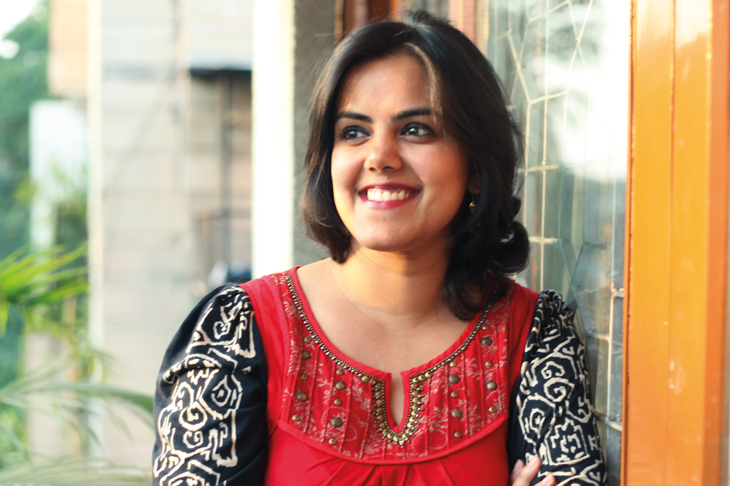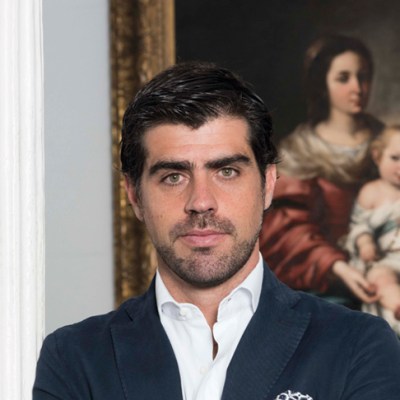37 | Founding Director, India Art Fair, Delhi, India
Did you envisage the success of the India Art Fair when you founded it in 2008?
When the fair was founded, it was really a bit of a start-up – an experiment. But I think that after the first couple of years, it was evident that it had to have a certain scale and level of importance. It quickly received a positive response from the art community in India: people realised it was relevant and got behind it.
What inspired you to start the fair?
My background was in management and marketing, but art had been an area of interest for me throughout school and college – not just fine art, but also the performing arts – and I had organised various amateur festivals and events while I was studying. It was when I was doing my Master’s at the University of Arts in London that I really became inspired by the possibilities of culture: the creative sector is so immersive there, and it made me aware of just how important the arts are to the society of a city. That was something that was lacking when I was growing up in Delhi. It got me thinking about what could have an impact and generate community engagement.
Has Delhi posed unique challenges for the success of the fair?
There’s a lot of curiosity and interest among the people at large. But when we started, the contemporary art scene in Delhi, and in India in general, was very small – there weren’t many galleries to go to, there are still very few museums, and going to look at art wasn’t something that people did growing up in Indian cities. What the art fair has done – we now have about 100,000 visitors every year – is really help to make art acceptable and increase engagement with it throughout the year.
Infrastructural limitations do get in the way of trying to do something world-class in Delhi. The government needs to do more to enable private enterprise in this sector – with production challenges, issues of compliance and regulation, and infrastructure more generally. The creative industries are not well defined in India, so part of the challenge is to educate the government, the corporations, and even schools about why we need to build an art ecosystem.
Has the fair helped to change international perceptions of contemporary Indian art?
Absolutely. Back in 2008, when we started, there really wasn’t any art of a global stature coming out of this part of the world. But over the past decade, amazing biennales have emerged across the subcontinent: the Kochi-Muziris Biennale, the Dhaka Art Summit, the Lahore Biennale and the Colombo Art Biennale. Back in 2008, the art fair played a pioneering role in encouraging the world to look at India in a certain way. The country hadn’t done enough to present contemporary Indian art before that. This year our collector base spanned 67 countries, which shows the growing international interest in contemporary Indian art.
How has the collector base in the region evolved since the fair started?
When we started, there was a large base of investors – people wanting to make money off art – but I think that’s now changed. We’ve seen a strong, mature collector base emerge in the region, made up of people who are really passionate about what they’re buying, who research well and are committed for the long term. At the same time, art has become a more mainstream interest: a lot of corporate collections have been started, and there are more young collectors – not just in the largest cities such as Delhi, Mumbai and Bangalore, but also in Tier II cities.
What do Indian contemporary art and the country’s creative industries need over the coming decade?
Internally, we need to keep pushing to make the creative industries mainstream, which means there needs to be stronger government understanding of the needs of contemporary culture, and how best the government can support art start-ups. We’ve been using words like access and education since the art fair started, but they’re still as relevant today.
Globally, it’s about positioning India contemporary art. We’ve never felt a challenge in terms of content: great work is being made by very inspiring artists across the whole subcontinent. There just needs to be more and more international visibility.
Are you hopeful that more museums will be built in India?
The public sector has moved very slowly. You do now see some state governments – in Rajasthan, Goa, and a few other places – taking a keen interest in promoting contemporary art and culture. Sculpture parks are emerging, old buildings are being restored as museums, and so on – but it’s just not enough. For a country of a billion people, we have very few museums that people can go to. As regards the private museum sector, the government needs to set out policies that incentivise more corporate organisations to look at supporting art.
I do think that big developments in the region, such as MCH choosing the India Art Fair for its first regional partnership, send a strong message and create confidence. I’m optimistic for the future of the creative industries in India.
See more 40 Under 40 Global Business



